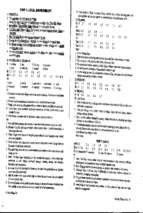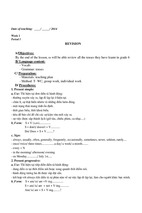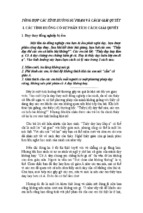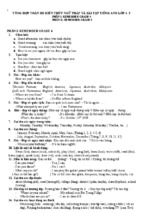An introduction to levy processes with applications in finance An introduction to levy processes with applications in finance An introduction to levy processes with applications in finance An introduction to levy processes with applications in finance An introduction to levy processes with applications in finance An introduction to levy processes with applications in finance An introduction to levy processes with applications in finance An introduction to levy processes with applications in finance An introduction to levy processes with applications in finance An introduction to levy processes with applications in finance An introduction to levy processes with applications in finance An introduction to levy processes with applications in finance An introduction to levy processes with applications in finance An introduction to levy processes with applications in finance An introduction to levy processes with applications in finance An introduction to levy processes with applications in finance An introduction to levy processes with applications in finance An introduction to levy processes with applications in finance An introduction to levy processes with applications in finance
AN INTRODUCTION TO LÉVY PROCESSES
WITH APPLICATIONS IN FINANCE
ANTONIS PAPAPANTOLEON
Abstract. These lectures notes aim at introducing Lévy processes in
an informal and intuitive way, accessible to non-specialists in the field.
In the first part, we focus on the theory of Lévy processes. We analyze
a ‘toy’ example of a Lévy process, viz. a Lévy jump-diffusion, which yet
offers significant insight into the distributional and path structure of a
Lévy process. Then, we present several important results about Lévy
processes, such as infinite divisibility and the Lévy-Khintchine formula,
the Lévy-Itô decomposition, the Itô formula for Lévy processes and Girsanov’s transformation. Some (sketches of) proofs are presented, still
the majority of proofs is omitted and the reader is referred to textbooks
instead. In the second part, we turn our attention to the applications
of Lévy processes in financial modeling and option pricing. We discuss
how the price process of an asset can be modeled using Lévy processes
and give a brief account of market incompleteness. Popular models in
the literature are presented and revisited from the point of view of Lévy
processes, and we also discuss three methods for pricing financial derivatives. Finally, some indicative evidence from applications to market data
is presented.
Contents
Part 1. Theory
1. Introduction
2. Definition
3. ‘Toy’ example: a Lévy jump-diffusion
4. Infinitely divisible distributions and the Lévy-Khintchine formula
5. Analysis of jumps and Poisson random measures
6. The Lévy-Itô decomposition
7. The Lévy measure, path and moment properties
8. Some classes of particular interest
8.1. Subordinator
8.2. Jumps of finite variation
8.3. Spectrally one-sided
8.4. Finite first moment
2
2
5
6
8
11
12
14
17
17
17
18
18
2000 Mathematics Subject Classification. 60G51,60E07,60G44,91B28.
Key words and phrases. Lévy processes, jump-diffusion, infinitely divisible laws, Lévy
measure, Girsanov’s theorem, asset price modeling, option pricing.
These lecture notes were prepared for mini-courses taught at the University of Piraeus
in April 2005 and March 2008, at the University of Leipzig in November 2005 and at
the Technical University of Athens in September 2006 and March 2008. I am grateful for
the opportunity of lecturing on these topics to George Skiadopoulos, Thorsten Schmidt,
Nikolaos Stavrakakis and Gerassimos Athanassoulis.
1
2
ANTONIS PAPAPANTOLEON
9. Elements from semimartingale theory
10. Martingales and Lévy processes
11. Itô’s formula
12. Girsanov’s theorem
13. Construction of Lévy processes
14. Simulation of Lévy processes
14.1. Finite activity
14.2. Infinite activity
Part 2. Applications in Finance
15. Asset price model
15.1. Real-world measure
15.2. Risk-neutral measure
15.3. On market incompleteness
16. Popular models
16.1. Black–Scholes
16.2. Merton
16.3. Kou
16.4. Generalized Hyperbolic
16.5. Normal Inverse Gaussian
16.6. CGMY
16.7. Meixner
17. Pricing European options
17.1. Transform methods
17.2. PIDE methods
17.3. Monte Carlo methods
18. Empirical evidence
Appendix A. Poisson random variables and processes
Appendix B. Compound Poisson random variables
Appendix C. Notation
Appendix D. Datasets
Appendix E. Paul Lévy
Acknowledgments
References
18
21
22
23
28
28
29
29
30
30
30
31
32
33
33
34
34
35
36
37
37
38
38
40
42
42
44
45
46
46
46
47
47
Part 1. Theory
1. Introduction
Lévy processes play a central role in several fields of science, such as
physics, in the study of turbulence, laser cooling and in quantum field theory;
in engineering, for the study of networks, queues and dams; in economics, for
continuous time-series models; in the actuarial science, for the calculation
of insurance and re-insurance risk; and, of course, in mathematical finance.
A comprehensive overview of several applications of Lévy processes can be
found in Prabhu (1998), in Barndorff-Nielsen, Mikosch, and Resnick (2001),
in Kyprianou, Schoutens, and Wilmott (2005) and in Kyprianou (2006).
INTRODUCTION TO LÉVY PROCESSES
3
150
USD/JPY
145
140
135
130
125
120
115
110
105
100
Oct 1997
Oct 1998
Oct 1999
Oct 2000
Oct 2001
Oct 2002
Oct 2003
Oct 2004
Figure 1.1. USD/JPY exchange rate, Oct. 1997–Oct. 2004.
In mathematical finance, Lévy processes are becoming extremely fashionable because they can describe the observed reality of financial markets in
a more accurate way than models based on Brownian motion. In the ‘real’
world, we observe that asset price processes have jumps or spikes, and risk
managers have to take them into consideration; in Figure 1.1 we can observe
some big price changes (jumps) even on the very liquid USD/JPY exchange
rate. Moreover, the empirical distribution of asset returns exhibits fat tails
and skewness, behavior that deviates from normality; see Figure 1.2 for a
characteristic picture. Hence, models that accurately fit return distributions
are essential for the estimation of profit and loss (P&L) distributions. Similarly, in the ‘risk-neutral’ world, we observe that implied volatilities are constant neither across strike nor across maturities as stipulated by the Black
and Scholes (1973) (actually, Samuelson 1965) model; Figure 1.3 depicts a
typical volatility surface. Therefore, traders need models that can capture
the behavior of the implied volatility smiles more accurately, in order to
handle the risk of trades. Lévy processes provide us with the appropriate
tools to adequately and consistently describe all these observations, both in
the ‘real’ and in the ‘risk-neutral’ world.
The main aim of these lecture notes is to provide an accessible overview
of the field of Lévy processes and their applications in mathematical finance
to the non-specialist reader. To serve that purpose, we have avoided most
of the proofs and only sketch a number of proofs, especially when they offer
some important insight to the reader. Moreover, we have put emphasis on
the intuitive understanding of the material, through several pictures and
simulations.
We begin with the definition of a Lévy process and some known examples. Using these as the reference point, we construct and study a Lévy
jump-diffusion; despite its simple nature, it offers significant insights and an
intuitive understanding of general Lévy processes. We then discuss infinitely
divisible distributions and present the celebrated Lévy–Khintchine formula,
which links processes to distributions. The opposite way, from distributions
ANTONIS PAPAPANTOLEON
0
20
40
60
80
4
−0.02
−0.01
0.0
0.01
0.02
Figure 1.2. Empirical distribution of daily log-returns for
the GBP/USD exchange rate and fitted Normal distribution.
to processes, is the subject of the Lévy-Itô decomposition of a Lévy process. The Lévy measure, which is responsible for the richness of the class of
Lévy processes, is studied in some detail and we use it to draw some conclusions about the path and moment properties of a Lévy process. In the next
section, we look into several subclasses that have attracted special attention and then present some important results from semimartingale theory.
A study of martingale properties of Lévy processes and the Itô formula for
Lévy processes follows. The change of probability measure and Girsanov’s
theorem are studied is some detail and we also give a complete proof in the
case of the Esscher transform. Next, we outline three ways for constructing
new Lévy processes and the first part closes with an account on simulation
methods for some Lévy processes.
The second part of the notes is devoted to the applications of Lévy processes in mathematical finance. We describe the possible approaches in modeling the price process of a financial asset using Lévy processes under the
‘real’ and the ‘risk-neutral’ world, and give a brief account of market incompleteness which links the two worlds. Then, we present a primer of popular
Lévy models in the mathematical finance literature, listing some of their
key properties, such as the characteristic function, moments and densities
(if known). In the next section, we give an overview of three methods for pricing options in Lévy-driven models, viz. transform, partial integro-differential
equation (PIDE) and Monte Carlo methods. Finally, we present some empirical results from the application of Lévy processes to real market financial
data. The appendices collect some results about Poisson random variables
and processes, explain some notation and provide information and links regarding the data sets used.
Naturally, there is a number of sources that the interested reader should
consult in order to deepen his knowledge and understanding of Lévy processes. We mention here the books of Bertoin (1996), Sato (1999), Applebaum (2004), Kyprianou (2006) on various aspects of Lévy processes. Cont
and Tankov (2003) and Schoutens (2003) focus on the applications of Lévy
INTRODUCTION TO LÉVY PROCESSES
5
14
13.5
13
implied vol (%)
12.5
12
11.5
11
10.5
10
10
20
30
40
delta (%) or strike
50
60
70
80
90
1
2
3
4
5
6
7
8
9
10
maturity
Figure 1.3. Implied volatilities of vanilla options on the
EUR/USD exchange rate on November 5, 2001.
processes in finance. The books of Jacod and Shiryaev (2003) and Protter (2004) are essential readings for semimartingale theory, while Shiryaev
(1999) blends semimartingale theory and applications to finance in an impressive manner. Other interesting and inspiring sources are the papers by
Eberlein (2001), Cont (2001), Barndorff-Nielsen and Prause (2001), Carr et
al. (2002), Eberlein and Özkan(2003) and Eberlein (2007).
2. Definition
Let (Ω, F, F, P ) be a filtered probability space, where F = FT and the
filtration F = (Ft )t∈[0,T ] satisfies the usual conditions. Let T ∈ [0, ∞] denote
the time horizon which, in general, can be infinite.
Definition 2.1. A càdlàg, adapted, real valued stochastic process L =
(Lt )0≤t≤T with L0 = 0 a.s. is called a Lévy process if the following conditions are satisfied:
(L1): L has independent increments, i.e. Lt − Ls is independent of Fs
for any 0 ≤ s < t ≤ T .
(L2): L has stationary increments, i.e. for any 0 ≤ s, t ≤ T the distribution of Lt+s − Lt does not depend on t.
(L3): L is stochastically continuous, i.e. for every 0 ≤ t ≤ T and � > 0:
lims→t P (|Lt − Ls | > �) = 0.
The simplest Lévy process is the linear drift, a deterministic process.
Brownian motion is the only (non-deterministic) Lévy process with continuous sample paths. Other examples of Lévy processes are the Poisson and
compound Poisson processes. Notice that the sum of a linear drift, a Brownian motion and a compound Poisson process is again a Lévy process; it
is often called a “jump-diffusion” process. We shall call it a “Lévy jumpdiffusion” process, since there exist jump-diffusion processes which are not
Lévy processes.
ANTONIS PAPAPANTOLEON
0.0
−0.1
0.01
0.02
0.0
0.03
0.1
0.04
0.05
0.2
6
0.0
0.2
0.4
0.6
0.8
1.0
0.0
0.2
0.4
0.6
0.8
1.0
−0.1
−0.4
0.0
−0.2
0.0
0.1
0.2
0.2
0.4
0.6
0.3
0.8
0.4
Figure 2.4. Examples of Lévy processes: linear drift (left)
and Brownian motion.
0.0
0.2
0.4
0.6
0.8
1.0
0.0
0.2
0.4
0.6
0.8
1.0
Figure 2.5. Examples of Lévy processes: compound Poisson
process (left) and Lévy jump-diffusion.
3. ‘Toy’ example: a Lévy jump-diffusion
Assume that the process L = (Lt )0≤t≤T is a Lévy jump-diffusion, i.e. a
Brownian motion plus a compensated compound Poisson process. The paths
of this process can be described by
(3.1)
Lt = bt + σWt +
Nt
�X
�
Jk − tλκ
k=1
where b ∈ R, σ ∈ R>0 , W = (Wt )0≤t≤T is a standard Brownian motion,
N = (Nt )0≤t≤T is a Poisson process with parameter λ (i.e. IE[Nt ] = λt)
and J = (Jk )k≥1 is an i.i.d. sequence of random variables with probability
distribution F and IE[J] = κ < ∞. Hence, F describes the distribution of
the jumps, which arrive according to the Poisson process. All sources of
randomness are mutually independent.
It is well known that Brownian motion is a martingale; moreover, the
compensated compound Poisson process is a martingale. Therefore, L =
(Lt )0≤t≤T is a martingale if and only if b = 0.
INTRODUCTION TO LÉVY PROCESSES
7
The characteristic function of Lt is
Nt
h
X
� iuLt �
��i
IE e
= IE exp iu bt + σWt +
Jk − tλκ
k=1
Nt
X
�
� h
�
��i
= exp iubt IE exp iuσWt exp iu
Jk − tλκ ;
k=1
since all the sources of randomness are independent, we get
Nt
X
�
� h
�i h
�i
= exp iubt IE exp iuσWt IE exp iu
Jk − iutλκ ;
k=1
taking into account that
1
IE[eiuσWt ] = e− 2 σ
IE[eiu
P Nt
k=1
Jk
2 u2 t
] = eλt(IE[e
,
Wt ∼ Normal(0, t)
iuJ −1])
,
Nt ∼ Poisson(λt)
(cf. also Appendix B) we get
h
�
�
= exp iubt exp −
h
�
�
= exp iubt exp −
h
�i
1 2 2 i
u σ t exp λt IE[eiuJ − 1] − iuIE[J]
2
h
�i
1 2 2 i
u σ t exp λt IE[eiuJ − 1 − iuJ] ;
2
and because the distribution of J is F we have
h 1
i
h Z
�
�
= exp iubt exp − u2 σ 2 t exp λt
2
i
�
eiux − 1 − iux F (dx) .
R
Now, since t is a common factor, we re-write the above equation as
��
Z
��
�
�
u2 σ 2
(3.2)
IE eiuLt = exp t iub −
+ (eiux − 1 − iux)λF (dx) .
2
R
Since the characteristic function of a random variable determines its distribution, we have a “characterization” of the distribution of the random
variables underlying the Lévy jump-diffusion. We will soon see that this distribution belongs to the class of infinitely divisible distributions and that
equation (3.2) is a special case of the celebrated Lévy-Khintchine formula.
Remark 3.1. Note that time factorizes out, and the drift, diffusion and
jumps parts are separated; moreover, the jump part factorizes to expected
number of jumps (λ) and distribution of jump size (F ). It is only natural
to ask if these features are preserved for all Lévy processes. The answer is
yes for the first two questions, but jumps cannot be always separated into a
product of the form λ × F .
8
ANTONIS PAPAPANTOLEON
4. Infinitely divisible distributions and the Lévy-Khintchine
formula
There is a strong interplay between Lévy processes and infinitely divisible
distributions. We first define infinitely divisible distributions and give some
examples, and then describe their relationship to Lévy processes.
Let X be a real valued random variable, denote
its characteristic function
R
by ϕX and its law by PX , hence ϕX (u) = R eiux PX (dx).RLet µ ∗ ν denote
the convolution of the measures µ and ν, i.e. (µ ∗ ν)(A) = R ν(A − x)µ(dx).
Definition 4.1. The law PX of a random variable X is infinitely divisible,
(1/n)
(1/n)
if for all n ∈ N there exist i.i.d. random variables X1
, . . . , Xn
such
that
(4.1)
d
(1/n)
X = X1
+ . . . + Xn(1/n) .
Equivalently, the law PX of a random variable X is infinitely divisible if for
all n ∈ N there exists another law PX (1/n) of a random variable X (1/n) such
that
(4.2)
PX = PX (1/n) ∗ . . . ∗ PX (1/n) .
{z
}
|
n times
Alternatively, we can characterize an infinitely divisible random variable
using its characteristic function.
Characterization 4.2. The law of a random variable X is infinitely divisible, if for all n ∈ N, there exists a random variable X (1/n) , such that
�n
�
(4.3)
ϕX (u) = ϕX (1/n) (u) .
Example 4.3 (Normal distribution). Using the characterization above, we
can easily deduce that the Normal distribution is infinitely divisible. Let
X ∼ Normal(µ, σ 2 ), then we have
h
i
h
1
µ 1 σ2 i
ϕX (u) = exp iuµ − u2 σ 2 = exp n(iu − u2 )
2
n 2 n
!
h µ 1 σ2 i n
= exp iu − u2
n 2 n
�
�n
= ϕX (1/n) (u) ,
2
where X (1/n) ∼ Normal( nµ , σn ).
Example 4.4 (Poisson distribution). Following the same procedure, we can
easily conclude that the Poisson distribution is also infinitely divisible. Let
X ∼ Poisson(λ), then we have
!
h
i
hλ
i n
ϕX (u) = exp λ(eiu − 1) = exp (eiu − 1)
n
�
�n
= ϕX (1/n) (u) ,
where X (1/n) ∼ Poisson( nλ ).
INTRODUCTION TO LÉVY PROCESSES
9
Remark 4.5. Other examples of infinitely divisible distributions are the
compound Poisson distribution, the exponential, the Γ-distribution, the geometric, the negative binomial, the Cauchy distribution and the strictly stable
distribution. Counter-examples are the uniform and binomial distributions.
The next theorem provides a complete characterization of random variables with infinitely divisible distributions via their characteristic functions;
this is the celebrated Lévy-Khintchine formula. We will use the following
preparatory result (cf. Sato 1999, Lemma 7.8).
Lemma 4.6. If (Pk )k≥0 is a sequence of infinitely divisible laws and Pk →
P , then P is also infinitely divisible.
Theorem 4.7. The law PX of a random variable X is infinitely divisible if
and only if there exists a triplet
(b, c, ν), with b ∈ R, c ∈ R>0 and a measure
R
satisfying ν({0}) = 0 and R (1 ∧ |x|2 )ν(dx) < ∞, such that
Z
h
i
u2 c
(4.4)
IE[eiuX ] = exp ibu −
+ (eiux − 1 − iux1{|x|<1} )ν(dx) .
2
R
Sketch of Proof. Here we describe the proof of the “if” part, for the full proof
see Theorem 8.1 in Sato (1999). Let (εn )n∈N be a sequence in R, monotonic
and decreasing to zero. Define for all u ∈ R and n ∈ N
Z
Z
h �
� u2 c
i
ϕXn (u) = exp iu b −
xν(dx) −
+
(eiux − 1)ν(dx) .
2
|x|>εn
εn <|x|≤1
Each ϕXn is the convolution of a normal and a compound Poisson distribution, hence ϕXn is the characteristic function of an infinitely divisible
probability measure PXn . We clearly have that
lim ϕXn (u) = ϕX (u);
n→∞
then, by Lévy’s continuity theorem and Lemma 4.6, ϕX is the characteristic
function of an infinitely divisible law, provided that ϕX is continuous at 0.
Now, continuity of ϕX at 0 boils down to the continuity of the integral
term, i.e.
Z
ψν (u) = (eiux − 1 − iux1{|x|<1} )ν(dx)
R
Z
=
(e
iux
Z
(eiux − 1)ν(dx).
− 1 − iux)ν(dx) +
{|x|≤1}
{|x|>1}
Using Taylor’s expansion, the Cauchy–Schwarz inequality, the definition of
the Lévy measure and dominated convergence, we get
Z
Z
1
2 2
|ψν (u)| ≤
|u x |ν(dx) +
|eiux − 1|ν(dx)
2
{|x|≤1}
≤
|u|2
{|x|>1}
Z
2
|x |ν(dx) +
2
{|x|≤1}
−→ 0
Z
as
u → 0.
|eiux − 1|ν(dx)
{|x|>1}
�
10
ANTONIS PAPAPANTOLEON
The triplet (b, c, ν) is called the Lévy or characteristic triplet and the
exponent in (4.4)
Z
u2 c
ψ(u) = iub −
+ (eiux − 1 − iux1{|x|<1} )ν(dx)
(4.5)
2
R
is called the Lévy or characteristic exponent. Moreover, b ∈ R is called the
drift term, c ∈ R>0 the Gaussian or diffusion coefficient and ν the Lévy
measure.
Remark 4.8. Comparing equations (3.2) and (4.4), we can immediately
deduce that the random variable Lt of the Lévy jump-diffusion is infinitely
divisible with Lévy triplet b = b · t, c = σ 2 · t and ν = (λF ) · t.
Now, consider a Lévy process L = (Lt )0≤t≤T ; for any n ∈ N and any
0 < t ≤ T we trivially have that
(4.6)
Lt = L t + (L 2t − L t ) + . . . + (Lt − L (n−1)t ).
n
n
n
n
The stationarity and independence of the increments yield that (L tk −
n
L t(k−1) )k≥1 is an i.i.d. sequence of random variables, hence we can conclude
n
that the random variable Lt is infinitely divisible.
Theorem 4.9. For every Lévy process L = (Lt )0≤t≤T , we have that
(4.7)
IE[eiuLt ] = etψ(u)
Z
h
�i
u2 c
= exp t ibu −
+ (eiux − 1 − iux1{|x|<1} )ν(dx)
2
R
where ψ(u) is the characteristic exponent of L1 , a random variable with an
infinitely divisible distribution.
Sketch of Proof. Define the function φu (t) = ϕLt (u), then we have
(4.8)
φu (t + s) = IE[eiuLt+s ] = IE[eiu(Lt+s −Ls ) eiuLs ]
= IE[eiu(Lt+s −Ls ) ]IE[eiuLs ] = φu (t)φu (s).
Now, φu (0) = 1 and the map t 7→ φu (t) is continuous (by stochastic continuity). However, the unique continuous solution of the Cauchy functional
equation (4.8) is
(4.9)
φu (t) = etϑ(u) ,
where
ϑ : R → C.
Since L1 is an infinitely divisible random variable, the statement follows. �
We have seen so far, that every Lévy process can be associated with the
law of an infinitely divisible distribution. The opposite, i.e. that given any
random variable X, whose law is infinitely divisible, we can construct a Lévy
process L = (Lt )0≤t≤T such that L(L1 ) := L(X), is also true. This will be
the subject of the Lévy-Itô decomposition. We prepare this result with an
analysis of the jumps of a Lévy process and the introduction of Poisson
random measures.
INTRODUCTION TO LÉVY PROCESSES
11
5. Analysis of jumps and Poisson random measures
The jump process ∆L = (∆Lt )0≤t≤T associated to the Lévy process L is
defined, for each 0 ≤ t ≤ T , via
∆Lt = Lt − Lt− ,
where Lt− = lims↑t Ls . The condition of stochastic continuity of a Lévy
process yields immediately that for any Lévy process L and any fixed t > 0,
then ∆Lt = 0 a.s.; hence, a Lévy process has no fixed times of discontinuity.
In general, the sum of the jumps of a Lévy process does not converge, in
other words it is possible that
X
|∆Ls | = ∞ a.s.
s≤t
but we always have that
X
|∆Ls |2 < ∞ a.s.
s≤t
which allows us to handle Lévy processes by martingale techniques.
A convenient tool for analyzing the jumps of a Lévy process is the random
measure of jumps of the process. Consider a set A ∈ B(R\{0}) such that
0∈
/ A and let 0 ≤ t ≤ T ; define the random measure of the jumps of the
process L by
(5.1)
µL (ω; t, A) = #{0 ≤ s ≤ t; ∆Ls (ω) ∈ A}
X
=
1A (∆Ls (ω));
s≤t
hence, the measure µL (ω; t, A) counts the jumps of the process L of size in
A up to time t. Now, we can check that µL has the following properties:
µL (t, A) − µL (s, A) ∈ σ({Lu − Lv ; s ≤ v < u ≤ t})
hence µL (t, A) − µL (s, A) is independent of Fs , i.e. µL (·, A) has independent
increments. Moreover, µL (t, A) − µL (s, A) equals the number of jumps of
Ls+u −Ls in A for 0 ≤ u ≤ t−s; hence, by the stationarity of the increments
of L, we conclude:
L(µL (t, A) − µL (s, A)) = L(µL (t − s, A))
i.e. µL (·, A) has stationary increments.
Hence, µL (·, A) is a Poisson process and µL is a Poisson random measure.
The intensity of this Poisson process is ν(A) = IE[µL (1, A)].
Theorem 5.1. The set function A 7→ µL (ω; t, A) defines a σ-finite measure
on R\{0} for each (ω, t). The set function ν(A) = IE[µL (1, A)] defines a
σ-finite measure on R\{0}.
Proof. The set function A 7→ µL (ω; t, A) is simply a counting measure on
B(R\{0}); hence,
Z
L
IE[µ (t, A)] = µL (ω; t, A)dP (ω)
is a Borel measure on B(R\{0}).
�
12
ANTONIS PAPAPANTOLEON
Definition 5.2. The measure ν defined by
�
�X
1A (∆Ls (ω))
ν(A) = IE[µL (1, A)] = IE
s≤1
is the Lévy measure of the Lévy process L.
Now, using that µL (t, A) is a counting measure we can define an integral with respect to the Poisson random measure µL . Consider a set
A ∈ B(R\{0}) such that 0 ∈
/ A and a function f : R → R, Borel measurable and finite on A. Then, the integral with respect to a Poisson random
measure is defined as follows:
Z
X
(5.2)
f (∆Ls )1A (∆Ls (ω)).
f (x)µL (ω; t, dx) =
s≤t
A
Note that each A f (x)µL (t, dx) is a real-valued random variable and generates
stochastic
We will denote the stochastic process by
R · R a càdlàg
R tprocess.
R
L
L
0 A f (x)µ (ds, dx) = ( 0 A f (x)µ (ds, dx))0≤t≤T .
R
Theorem 5.3. Consider a set A ∈ B(R\{0}) with 0 ∈
/ A and a function
f : R → R, Borel measurable and finite on A.
RtR
A. The process ( 0 A f (x)µL (ds, dx))0≤t≤T is a compound Poisson process
with characteristic function
h
� Z tZ
�i
� Z
�
L
(5.3) IE exp iu
f (x)µ (ds, dx) = exp t (eiuf (x) − 1)ν(dx) .
0
B. If f ∈
(5.4)
A
A
L1 (A),
then
Z
h Z tZ
i
L
IE
f (x)µ (ds, dx) = t
f (x)ν(dx).
0
A
A
C. If f ∈ L2 (A), then
Z
��
�� Z t Z
�
�
L
(5.5)
Var �
f (x)µ (ds, dx)� = t
|f (x)|2 ν(dx).
0
A
A
Sketch of Proof. The structure of the proof is to start with simple functions
and pass to positive measurable functions, then take limits and use dominated convergence; cf. Theorem 2.3.8 in Applebaum (2004).
�
6. The Lévy-Itô decomposition
Theorem 6.1. Consider a triplet R(b, c, ν) where b ∈ R, c ∈ R>0 and ν is a
measure satisfying ν({0}) = 0 and R (1∧|x|2 )ν(dx) < ∞. Then, there exists
a probability space (Ω, F, P ) on which four independent Lévy processes exist,
L(1) , L(2) , L(3) and L(4) , where L(1) is a constant drift, L(2) is a Brownian
motion, L(3) is a compound Poisson process and L(4) is a square integrable
(pure jump) martingale with an a.s. countable number of jumps of magnitude
less than 1 on each finite time interval. Taking L = L(1) + L(2) + L(3) + L(4) ,
we have that there exists a probability space on which a Lévy process L =
(Lt )0≤t≤T with characteristic exponent
Z
u2 c
(6.1)
ψ(u) = iub −
+ (eiux − 1 − iux1{|x|<1} )ν(dx)
2
R
INTRODUCTION TO LÉVY PROCESSES
13
for all u ∈ R, is defined.
Proof. See chapter 4 in Sato (1999) or chapter 2 in Kyprianou (2006).
�
The Lévy-Itô decomposition is a hard mathematical result to prove; here,
we go through some steps of the proof because it reveals much about the
structure of the paths of a Lévy process. We split the Lévy exponent (6.1)
into four parts
ψ = ψ (1) + ψ (2) + ψ (3) + ψ (4)
where
u2 c
,
ψ (1) (u) = iub,
ψ (2) (u) =
2
Z
ψ (3) (u) =
(eiux − 1)ν(dx),
|x|≥1
ψ
(4)
Z
(u) =
(eiux − 1 − iux)ν(dx).
|x|<1
The first part corresponds to a deterministic linear process (drift) with
√ parameter b, the second one to a Brownian motion with coefficient c and
the third part corresponds to a compound Poisson process with arrival rate
ν(dx)
λ := ν(R\(−1, 1)) and jump magnitude F (dx) := ν(R\(−1,1))
1{|x|≥1} .
The last part is the most difficult to handle; let ∆L(4) denote the jumps
(4)
(4)
(4)
(4)
of the Lévy process L(4) , that is ∆Lt = Lt − Lt− , and let µL denote
the random measure counting the jumps of L(4) . Next, one constructs a
compensated compound Poisson process
� Z
�
X
(4,�)
(4)
Lt
=
∆Ls 1{1>|∆L(4) |>�} − t
xν(dx)
s
0≤s≤t
Zt
1>|x|>�
Z
=
xµ
L(4)
�
(dx, ds) − t
0 1>|x|>�
Z
�
xν(dx)
1>|x|>�
and shows that the jumps of L(4) form a Poisson process; using Theorem
5.3 we get that the characteristic exponent of L(4,�) is
Z
(4,�)
ψ
(u) =
(eiux − 1 − iux)ν(dx).
�<|x|<1
Then, there exists a Lévy process L(4) which is a square integrable martingale,
such that L(4,�) → L(4) uniformly on [0, T ] as � → 0+. Clearly, the Lévy
exponent of the latter Lévy process is ψ (4) .
Therefore, we can decompose any Lévy process into four independent
Lévy processes L = L(1) + L(2) + L(3) + L(4) , as follows
Zt Z
Zt Z
√
L
(6.2) Lt = bt + cWt +
xµ (ds, dx) +
x(µL − ν L )(ds, dx)
0 |x|≥1
0 |x|<1
14
ANTONIS PAPAPANTOLEON
5
5
4
4
3
3
2
2
1
1
Figure 7.6. The distribution function of the Lévy measure
of the standard Poisson process (left) and the density of the
Lévy measure of a compound Poisson process with doubleexponentially distributed jumps.
5
5
4
4
3
3
2
2
1
1
Figure 7.7. The density of the Lévy measure of an NIG
(left) and an α-stable process.
where ν L (ds, dx) = ν(dx)ds. Here L(1) is a constant drift, L(2) a Brownian
motion, L(3) a compound Poisson process and L(4) a pure jump martingale.
This result is the celebrated Lévy-Itô decomposition of a Lévy process.
7. The Lévy measure, path and moment properties
The Lévy measure ν is a measure on R that satisfies
Z
(7.1)
ν({0}) = 0
and
(1 ∧ |x|2 )ν(dx) < ∞.
R
Intuitively speaking, the Lévy measure describes the expected number of
jumps of a certain height in a time interval of length 1. The Lévy measure
has no mass at the origin, while singularities (i.e. infinitely many jumps) can
occur around the origin (i.e. small jumps). Moreover, the mass away from
the origin is bounded (i.e. only a finite number of big jumps can occur).
Recall the example of the Lévy jump-diffusion; the Lévy measure is ν(dx) =
λ × F (dx); from that we can deduce that the expected number of jumps is
λ and the jump size is distributed according to F .
R
More generally, if ν is a finite measure, i.e. λ := ν(R) = R ν(dx) < ∞,
then we can define F (dx) := ν(dx)
λ , which is a probability measure. Thus,
λ is the expected number of jumps and F (dx) the distribution of the jump
size x. If ν(R) = ∞, then an infinite number of (small) jumps is expected.
INTRODUCTION TO LÉVY PROCESSES
15
1
0.8
0.6
0.4
0.2
Figure 7.8. The Lévy measure must integrate |x|2 ∧ 1 (red
line); it has finite variation if it integrates |x| ∧ 1 (blue line);
it is finite if it integrates 1 (orange line).
The Lévy measure is responsible for the richness of the class of Lévy
processes and carries useful information about the structure of the process.
Path properties can be read from the Lévy measure: for example, Figures
7.6 and 7.7 reveal that the compound Poisson process has a finite number
of jumps on every time interval, while the NIG and α-stable processes have
an infinite one; we then speak of an infinite activity Lévy process.
Proposition 7.1. Let L be a Lévy process with triplet (b, c, ν).
(1) If ν(R) < ∞, then almost all paths of L have a finite number of
jumps on every compact interval. In that case, the Lévy process has
finite activity.
(2) If ν(R) = ∞, then almost all paths of L have an infinite number of
jumps on every compact interval. In that case, the Lévy process has
infinite activity.
Proof. See Theorem 21.3 in Sato (1999).
�
Whether a Lévy process has finite variation or not also depends on the
Lévy measure (and on the presence or absence of a Brownian part).
Proposition 7.2. Let L be a Lévy process with triplet (b, c, ν).
R
(1) If c = 0 and |x|≤1 |x|ν(dx) < ∞, then almost all paths of L have
finite variation.
R
(2) If c 6= 0 or |x|≤1 |x|ν(dx) = ∞, then almost all paths of L have
infinite variation.
Proof. See Theorem 21.9 in Sato (1999).
�
The different functions a Lévy measure has to integrate in order to have
finite activity or variation, are graphically exhibited in Figure 7.8. The compound Poisson process has finite measure, hence it has finite variation as
well; on the contrary, the NIG Lévy process has an infinite measure and has
infinite variation. In addition, the CGMY Lévy process for 0 < Y < 1 has
infinite activity, but the paths have finite variation.
16
ANTONIS PAPAPANTOLEON
The Lévy measure also carries information about the finiteness of the
moments of a Lévy process. This is particularly useful information in mathematical finance, related to the existence of a martingale measure.
The finiteness of the moments of a Lévy process is related to the finiteness
of an integral over the Lévy measure (more precisely, the restriction of the
Lévy measure to jumps larger than 1 in absolute value, i.e. big jumps).
Proposition 7.3. Let L be a Lévy process with triplet (b, c, ν). Then
(1) RLt has finite p-th moment for p ∈ R>0 (IE|Lt |p < ∞) if and only if
p
|x|≥1 |x| ν(dx) < ∞.
(2) Lt has finiteR p-th exponential moment for p ∈ R (IE[epLt ] < ∞) if
and only if |x|≥1 epx ν(dx) < ∞.
Proof. The proof of these results can be found in Theorem 25.3 in Sato
(1999). Actually, the conclusion of this theorem holds for the general class of
submultiplicative functions (cf. Definition 25.1 in Sato 1999), which contains
exp(px) and |x|p ∨ 1 as special cases.
�
In order to gain some understanding of this result and because it blends
beautifully with the Lévy-Itô decomposition, we will give a rough proof of
the sufficiency for the second statement (inspired by Kyprianou 2006).
Recall from the Lévy-Itô decomposition, that the characteristic exponent
of a Lévy process was split into four independent parts, the third of which
is a compound Poisson process with arrival rate λ := ν(R\(−1, 1)) and
ν(dx)
1{|x|≥1} . Finiteness of IE[epLt ] implies
jump magnitude F (dx) := ν(R\(−1,1))
(3)
finiteness of IE[epLt ], where
(3)
pLt
IE[e
] = e−λt
X (λt)k
k≥0
= e−λt
k!
R
X tk
k≥0
k
Z
epx F (dx)
k!
k
Z
epx 1{|x|≥1} ν(dx) .
R
Since all the summands must be finite, the one corresponding to k = 1 must
also be finite, therefore
Z
Z
e−λt epx 1{|x|≥1} ν(dx) < ∞ =⇒
epx ν(dx) < ∞.
R
|x|≥1
The graphical representation of the functions the Lévy measure must
integrate so that a Lévy process has finite moments is given in Figure 7.9.
The NIG process possesses moments of all order, while the α-stable does not;
one can already observe in Figure 7.7 that the tails of the Lévy measure of
the α-stable are much heavier than the tails of the NIG.
Remark 7.4. As can be observed from Propositions 7.1, 7.2 and 7.3, the
variation of a Lévy process depends on the small jumps (and the Brownian
motion), the moment properties depend on the big jumps, while the activity
of a Lévy process depends on all the jumps of the process.
INTRODUCTION TO LÉVY PROCESSES
17
4
3
2
1
Figure 7.9. A Lévy process has first moment if the Lévy
measure integrates |x| for |x| ≥ 1 (blue line) and second
moment if it integrates x2 for |x| ≥ 1 (orange line).
8. Some classes of particular interest
We already know that a Brownian motion, a (compound) Poisson process
and a Lévy jump-diffusion are Lévy processes, their Lévy-Itô decomposition
and their characteristic functions. Here, we present some further subclasses
of Lévy processes that are of special interest.
8.1. Subordinator. A subordinator is an a.s. increasing (in t) Lévy process.
Equivalently,
R for L to be a subordinator, Rthe triplet must satisfy ν(−∞, 0) =
0, c = 0, (0,1) xν(dx) < ∞ and γ = b − (0,1) xν(dx) > 0.
The Lévy-Itô decomposition of a subordinator is
Zt Z
(8.1)
xµL (ds, dx)
Lt = γt +
0 (0,∞)
and the Lévy-Khintchine formula takes the form
Z
h
�i
iuLt
] = exp t iuγ +
(eiux − 1)ν(dx) .
(8.2)
IE[e
(0,∞)
Two examples of subordinators are the Poisson and the inverse Gaussian
process, cf. Figures 8.10 and A.14.
8.2. Jumps of finite
R variation. A Lévy process has jumps of finite variation if and only if |x|≤1 |x|ν(dx) < ∞. In this case, the Lévy-Itô decomposition of L resumes the form
Zt Z
√
xµL (ds, dx)
(8.3)
Lt = γt + cWt +
0 R
and the Lévy-Khintchine formula takes the form
Z
h
�i
u2 c
iuLt
(8.4)
IE[e
] = exp t iuγ −
+ (eiux − 1)ν(dx) ,
2
R
18
ANTONIS PAPAPANTOLEON
where γ is defined similarly to subsection 8.1.
Moreover, if ν([−1, 1]) < ∞, which means that ν(R) < ∞, then the jumps
of L correspond to a compound Poisson process.
8.3. Spectrally one-sided. A Lévy processes is called spectrally negative
if ν(0, ∞) = 0. The Lévy-Itô decomposition of a spectrally negative Lévy
process has the form
Zt Z
Zt Z
√
L
(8.5) Lt = bt + cWt +
xµ (ds, dx) +
x(µL − ν L )(ds, dx)
0 −1−1} )ν(dx) .
+
2
(−∞,0)
Similarly, a Lévy processes is called spectrally positive if −L is spectrally
negative.
8.4. Finite first moment. As weR have seen already, a Lévy process has
finite first moment if and only if |x|≥1 |x|ν(dx) < ∞. Therefore, we can
also compensate the big jumps to form a martingale, hence the Lévy-Itô
decomposition of L resumes the form
Zt Z
√
0
(8.7)
Lt = b t + cWt +
x(µL − ν L )(ds, dx)
0 R
and the Lévy-Khintchine formula takes the form
Z
h
�i
u2 c
0
iuLt
] = exp t iub −
(8.8)
IE[e
+ (eiux − 1 − iux)ν(dx) ,
2
R
R
0
where b = b + |x|≥1 xν(dx).
Remark 8.1 (Assumption (M)). For the remaining parts we will work
only with Lévy process that have finite first moment. We will refer to them
as Lévy processes that satisfy Assumption (M). For the sake of simplicity,
we suppress the notation b0 and write b instead.
9. Elements from semimartingale theory
A semimartingale is a stochastic process X = (Xt )0≤t≤T which admits
the decomposition
(9.1)
X = X0 + M + A
where X0 is finite and F0 -measurable, M is a local martingale with M0 = 0
and A is a finite variation process with A0 = 0. X is a special semimartingale
if A is predictable.
Every special semimartingale X admits the following, so-called, canonical
decomposition
(9.2)
X = X0 + B + X c + x ∗ (µX − ν X ).
19
0
−0.5
10
0.0
20
30
0.5
40
INTRODUCTION TO LÉVY PROCESSES
0.0
0.2
0.4
0.6
0.8
1.0
0.0
0.2
0.4
0.6
0.8
1.0
Figure 8.10. Simulated path of a normal inverse Gaussian
(left) and an inverse Gaussian process.
Here X c is the continuous martingale part of X and x ∗ (µX − ν X ) is the
purely discontinuous martingale part of X. µX is called the random measure
of jumps of X; it counts the number of jumps of specific size that occur in
a time interval of specific length. ν X is called the compensator of µX ; for a
detailed account, we refer to Jacod and Shiryaev (2003, Chapter II).
Remark 9.1. Note that W ∗ µ, for W = W (ω; s, x) and the integer-valued
measure µ = µ(ω; dt, dx), t ∈ [0, T ], x ∈ E, denotes the integral process
Z· Z
W (ω; t, x)µ(ω; dt, dx).
0 E
Consider a predictable function W : Ω × [0, T ] × E → R in Gloc (µ); then
W ∗ (µ − ν) denotes the stochastic integral
Z· Z
W (ω; t, x)(µ − ν)(ω; dt, dx).
0 E
Now, recalling the Lévy-Itô decomposition (8.7) and comparing it to (9.2),
we can easily deduce that a Lévy process with triplet (b, c, ν) which satisfies
Assumption (M), has the following canonical decomposition
(9.3)
Lt = bt +
√
Zt Z
cWt +
x(µL − ν L )(ds, dx),
0 R
where
Zt Z
xµL (ds, dx) =
X
∆Ls
0≤s≤t
0 R
and
Z
h Zt Z
i Zt Z
L
L
IE
xµ (ds, dx) =
xν (ds, dx) = t xν(dx).
0 R
0 R
R
20
ANTONIS PAPAPANTOLEON
Therefore, a Lévy process that satisfies Assumption (M) is a special semimartingale √
where the continuous martingale part is a Brownian motion with
coefficient c and the random measure of the jumps is a Poisson random
measure. The compensator ν L of the Poisson random measure µL is a product measure of the Lévy measure with the Lebesgue measure, i.e. ν L = ν ⊗λ\;
one then also writes ν L (ds, dx) = ν(dx)ds.
We denote the continuous martingale part of L by Lc and the purely
discontinuous martingale part of L by Ld , i.e.
(9.4)
Lct
=
√
cWt
and
Zt Z
Ldt
=
x(µL − ν L )(ds, dx).
0 R
Remark 9.2. Every Lévy process is also a semimartingale; this follows
easily from (9.1) and the Lévy–Itô decomposition of a Lévy process. Every
Lévy process with finite first moment (i.e. that satisfies Assumption (M))
is also a special semimartingale; conversely, every Lévy process that is a
special semimartingale, has a finite first moment. This is the subject of the
next result.
Lemma 9.3. Let L be a Lévy process with triplet (b, c, ν). The following
conditions are equivalent
(1) L
semimartingale,
R is a special
2
(2) RR (|x| ∧ |x| )ν(dx) < ∞,
(3) R |x|1{|x|≥1} ν(dx) < ∞.
Proof. From Lemma 2.8 in Kallsen and Shiryaev (2002) we have that, a
Lévy process (semimartingale) is special if and only if the compensator of
its jump measure satisfies
Z· Z
(|x| ∧ |x|2 )ν L (ds, dx) ∈ V.
0 R
For a fixed t ∈ R, we get
Zt Z
2
L
Zt Z
(|x| ∧ |x| )ν (ds, dx) =
0 R
(|x| ∧ |x|2 )ν(dx)ds
0 R
Z
=t·
(|x| ∧ |x|2 )ν(dx)
R
and the last expression is an element of V if and only if
Z
(|x| ∧ |x|2 )ν(dx) < ∞;
R
this settles (1) ⇔ (2). The equivalence
(3) follows from the properties
R (2) ⇔
2
of the Lévy measure, namely that |x|<1 |x| ν(dx) < ∞, cf. (7.1).
�
- Xem thêm -




















